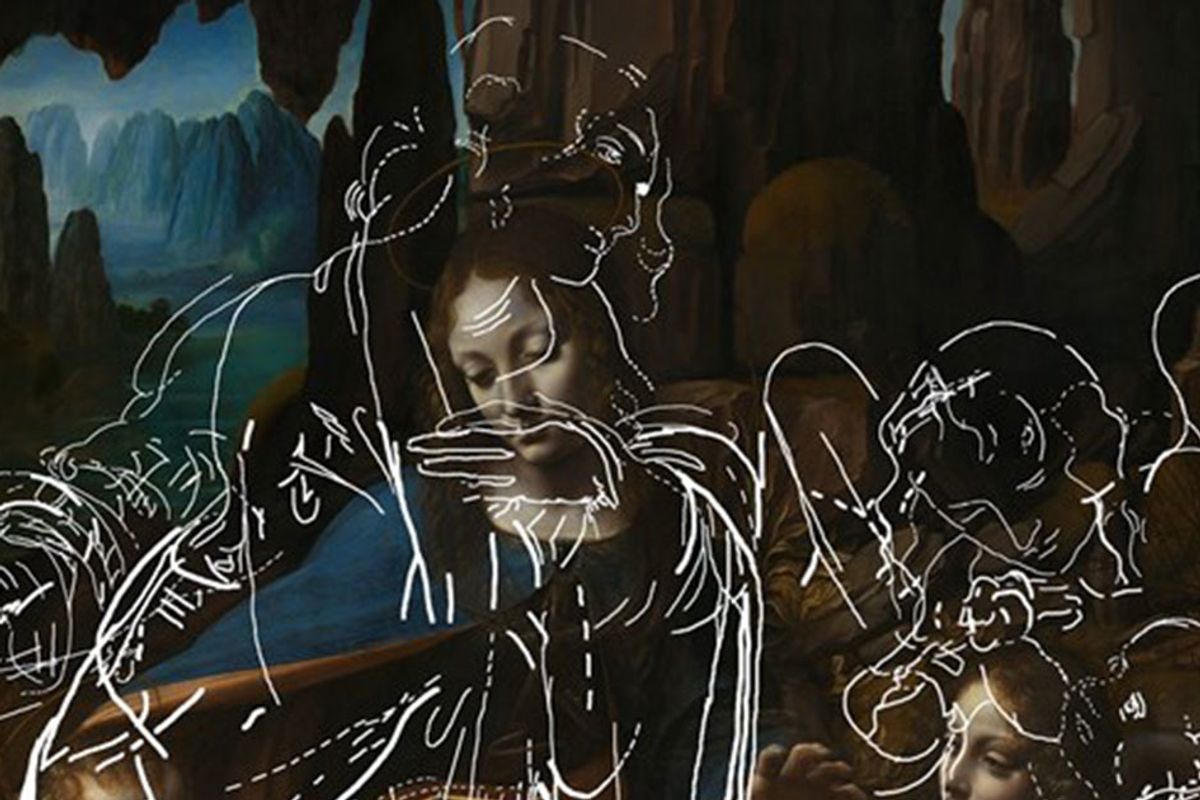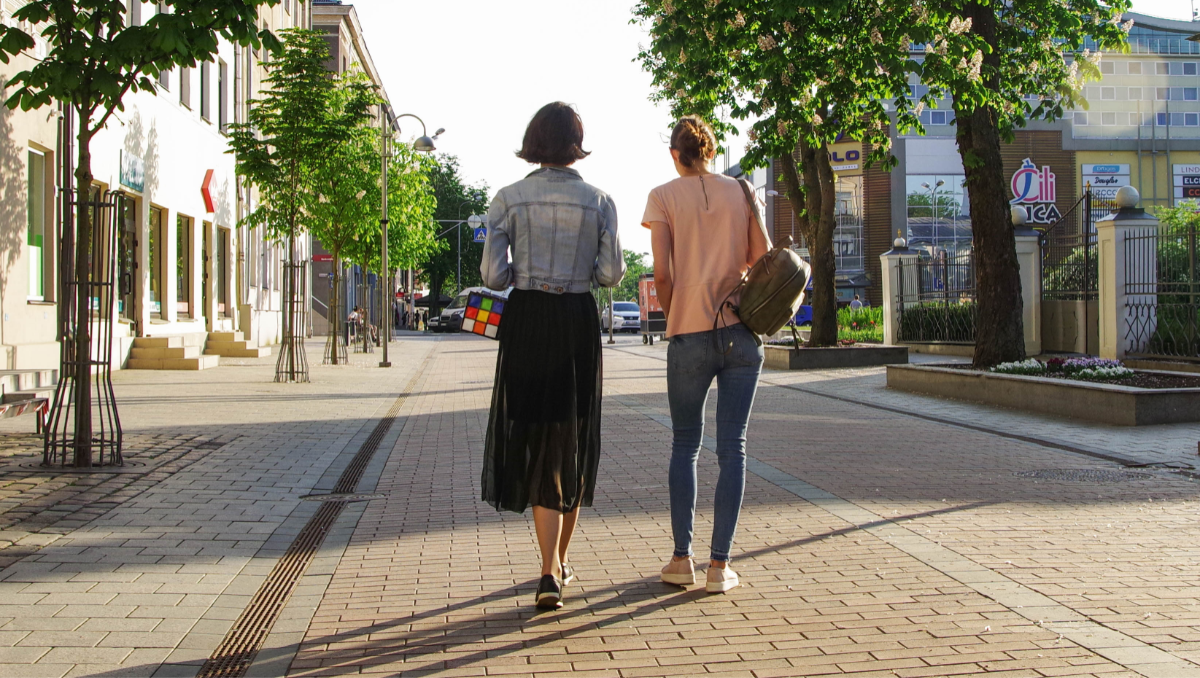Recently discovered sketches underneath a Leonardo da Vinci painting give us insight into his process

Getting to peek inside a great artist's process is fascinating. If we had a time machine, we'd be able to pick the brains of ancient artists who produced the work we now study in art history and gain insight into their technique. While can't go back and have a chat with Leonardo Da Vinci, we can still understand how he worked thanks to a discovery hiding within one of his works.
A scientific analysis of Da Vinci's paintings, "The Virgin of the Rocks," is giving us a glimpse inside the Italian Renaissance master's process. There are a series of sketches and hand prints underneath the finished product, which tells us he didn't get it right on the first try.
The painting has been around for over 500 years, and it is speculated that it was created between the early 1490s and 1508. "The Virgin of the Rocks" was painted for a church in Milan, but now rests in London's National Gallery. The museum will feature the recently discovered drawings in a new exhibit called Leonardo: Experience a Masterpiece, which will open in late 2019.
RELATED: Van Gogh's paintings come to life at this incredible art museum. Come take a tour.
The painting depicts the Virgin Mary and Baby Jesus sitting with the infant John the Baptist and an angel in a rocky location. The sketches suggest that Da Vinci had a more traditional adoration scene in mind when he began the painting. "In the abandoned composition both figures are positioned higher up, while the angel, facing out, is looking down on the Infant Christ with what appears to be a much tighter embrace," the London National Gallery explained in a press release. The angle of the Infant Christ's head was changed, and some of the angel's curly hair was removed. There were also hand prints where either da Vinci or an assistant patted down paint on the canvas.
The underdrawings might have gone undiscovered if it wasn't for the magic of science. "These new images were found because the drawings were made in a material that contained some zinc, so it could be seen in the macro x-ray fluorescence (MA-XRF) maps showing where this chemical element was present, and also through new infrared and hyperspectral imaging," the gallery explained.
RELATED: This artist's unusual paintings are helping people love their bodies.
Da Vinci might have birthed some of the most famous paintings in history, including the Mona Lisa, but he didn't plop out perfection like it was nothing. The sketches show that the artist achieved his final product through trial and error. It takes a lot of work to get it just right.
So if you don't get something right the first time, don't sweat it. Leonardo da Vinci wasn't perfect, either.
- The oldest whales on the planet are more ancient than 'Moby-Dick ... ›
- A man found his grandfather's Disneyland footage from 1956 and it's ... ›
- Why one city is giving its residents $500 a month — no strings ... ›
- A group of Syrian refugees wandered into a furry convention — and ... ›
- The moving story of Judith and Joyce Scott will make you believe in ... ›
- The original Gerber baby met the newest, and the moment was ... ›
- 23 magical photos from the new Harry Potter theme park's grand ... ›
- Two color-blind brothers see each other in color for the first time, and ... ›
- This viral video is the universal dose of baby joy magic we all need ... ›
- This artist creates breathtakingly realistic sketches — and he's only ... ›
- Woman with disastrous initials can't wear monogrammed clothes - Upworthy ›
- Researchers hacked 5 people's brains so they could see a new and impossible color - Upworthy ›
- Leonardo da Vinci portrait marks 500th anniversary of his death ... ›
- Science and inventions of Leonardo da Vinci - Wikipedia ›
- Found: Hidden Sketches Underneath a da Vinci Painting - Atlas ... ›
- 9 Sketching Techniques Leonardo da Vinci Used To Achieve Artistic ... ›
- Leonardo da Vinci Drawings ›
- Old sketch is da Vinci worth $16M, retired doctor is told ›
- Leonardo Da Vinci SKetch Art Photoshop Action Tutorial - YouTube ›
- Sketches revealed underneath Leonardo's 'Virgin of the Rocks ... ›
- Abandoned sketch found under landmark Leonardo da Vinci work ... ›
- Leonardo da Vinci Drawings ›





 Even when there's no assigned seat, everyone knows where they usually sit.
Even when there's no assigned seat, everyone knows where they usually sit.
 Women walking down a street.Image via Canva Photos.
Women walking down a street.Image via Canva Photos.  Woman aware of her surroundings in a parking garage. Image via Canva Photos.
Woman aware of her surroundings in a parking garage. Image via Canva Photos.
 Season 3 Dancing GIF by Party Down
Season 3 Dancing GIF by Party Down  music video happy dance GIF by Apple Music
music video happy dance GIF by Apple Music 
 A boots story shows why it can be so hard to climb out of poverty.
A boots story shows why it can be so hard to climb out of poverty.  A good pair of work boots will save you money in the long run, but only if you can afford them in the first place.
A good pair of work boots will save you money in the long run, but only if you can afford them in the first place. More reliable cars cost more up front.
More reliable cars cost more up front.  It's hard to climb out of poverty when you can't reach the ladder.
It's hard to climb out of poverty when you can't reach the ladder.